In today’s rapidly evolving digital landscape, blockchain technology has emerged as a buzzword that holds the potential to revolutionize industries across the globe. But what exactly is blockchain, and why is it such a critical component of modern technology? You may have heard about it in the context of cryptocurrencies like Bitcoin or Ethereum, but blockchain extends far beyond just digital currencies. In this comprehensive article, I will guide you through everything you need to know about blockchain technology, its underlying principles, its applications, and how it is reshaping the future of industries from finance to supply chain management.
The Rise of Blockchain Technology
Blockchain technology is often described as the backbone of decentralized systems. It’s a powerful tool that ensures transparency, security, and efficiency without the need for centralized control. While it has gained massive popularity due to its association with cryptocurrencies, blockchain’s applications are far-reaching. This article aims to break down what blockchain is, how it works, and how it is transforming different sectors by providing trust and traceability in a trustless environment.

So, why should you care? Whether you’re a tech enthusiast, business leader, or entrepreneur, understanding blockchain will equip you with the knowledge to capitalize on this transformative technology. Let’s dive deeper into the mechanics of blockchain, its features, and its potential.
Also read this What is Copper Clad Wire?
What is Blockchain Technology?
At its core, blockchain is a distributed ledger technology (DLT) that securely records transactions across multiple computers. The key characteristics of blockchain include its decentralized nature, immutability, and transparency. These characteristics make it ideal for use cases where trust and security are paramount, and third-party intermediaries are either undesirable or unnecessary.
Unlike traditional centralized databases, blockchain doesn’t rely on a single point of control. Instead, data is stored in blocks that are chained together in a chronological order, forming a “blockchain.” This decentralization means that no single entity has control over the entire database, making it resistant to tampering and fraud.
The Core Elements of Blockchain Technology
- Distributed Ledger: Blockchain operates as a distributed ledger across a network of computers (or nodes), with each node holding a copy of the entire blockchain. This decentralized approach enhances security and resilience.
- Immutability: Once a transaction is recorded on the blockchain, it cannot be altered or deleted. This makes blockchain a secure and reliable method for tracking information over time.
- Transparency and Trust: All participants in a blockchain network can access the same records. This transparency fosters trust between parties, as the entire network has visibility into the transactions being processed.
- Smart Contracts: These are self-executing contracts with the terms of the agreement directly written into lines of code. Smart contracts automate and streamline processes by executing predefined conditions without needing a third-party intermediary.
- Consensus Mechanisms: In a blockchain network, participants use various consensus algorithms to agree on the validity of transactions. Common mechanisms include Proof of Work (PoW), Proof of Stake (PoS), and Delegated Proof of Stake (DPoS).
How Does Blockchain Work?
To understand blockchain better, let’s break down the process of how transactions occur within a blockchain network.
- Transaction Creation: A transaction is initiated, which could be anything from sending cryptocurrency to updating a supply chain record. The transaction is broadcasted to the blockchain network.
- Validation: The transaction is validated by participants in the network (also called nodes) through the consensus mechanism. Depending on the consensus algorithm, this might require solving complex mathematical problems or proving the stake of the participant in the network.
- Block Formation: Once the transaction is validated, it is bundled with other transactions to form a block. This block is then added to the existing blockchain.
- Chain Integrity: Each new block contains a reference to the previous block, creating an unbreakable chain. This makes it nearly impossible to alter or delete any of the recorded transactions.
- Completion: The updated blockchain is now accessible to all nodes in the network, ensuring that the entire system remains synchronized and transparent.
Applications of Blockchain Technology
While blockchain was initially introduced as the underlying technology for Bitcoin, it has since expanded into various industries, transforming traditional business processes and creating new opportunities for innovation. Let’s explore some of the most impactful applications.

1. Cryptocurrencies
Cryptocurrencies like Bitcoin, Ethereum, and other altcoins are perhaps the most well-known use cases of blockchain technology. These digital currencies rely on blockchain to maintain their decentralized nature, ensure transaction security, and reduce the reliance on central authorities like banks.
2. Supply Chain Management
Blockchain enhances transparency and traceability in supply chains. By recording each transaction on an immutable ledger, blockchain allows stakeholders to track the movement of goods from production to delivery, reducing fraud and inefficiencies.
3. Healthcare
Blockchain technology can be used to securely store and share medical records between healthcare providers, ensuring that patient data is accurate, accessible, and private. It can also streamline medical supply chain management and help combat counterfeit drugs.
4. Voting Systems
The implementation of blockchain in voting systems ensures that votes are secure, transparent, and tamper-proof. Blockchain-based voting could revolutionize elections by providing a reliable method for conducting secure, digital elections.
5. Identity Verification
Blockchain can provide a decentralized identity management solution, where individuals control their personal data rather than relying on centralized entities like government agencies or social media platforms.
6. Financial Services
Beyond cryptocurrencies, blockchain is making waves in the financial services sector, including in areas like cross-border payments, remittances, and trade finance. It has the potential to streamline and reduce the cost of financial transactions.
7. Intellectual Property Protection
By using blockchain to register and timestamp intellectual property (IP), creators and innovators can ensure their work is secure and easily verified. This can help prevent piracy and unauthorized use of IP.
Comparison Table: Blockchain vs Traditional Databases
| Feature | Blockchain | Traditional Databases |
|---|---|---|
| Centralization | Decentralized | Centralized |
| Security | High due to immutability and encryption | Depends on central authority security measures |
| Transparency | Transparent, accessible to all participants | Restricted access, centralized control |
| Data Modification | Immutability – data cannot be changed once added | Data can be altered or deleted by authorized users |
| Data Integrity | Strong – hard to tamper with records | Vulnerable to breaches and manipulation |
| Cost | Lower for cross-border payments (no intermediaries) | High due to intermediaries and administrative costs |
| Speed | Slower (due to consensus mechanisms) | Faster with centralized control |
Advantages and Disadvantages of Blockchain
Advantages
- Decentralization: Eliminates the need for middlemen, empowering users with greater control over their data.
- Transparency: All participants can view transactions in real-time, enhancing trust.
- Security: Blockchain’s cryptographic techniques provide robust protection against data breaches.
- Immutability: Once recorded, data cannot be altered, reducing the risk of fraud and errors.
- Efficiency: Automating processes through smart contracts can streamline business operations.
Disadvantages
- Scalability Issues: Blockchain networks can experience slow transaction speeds due to the time required for consensus.
- Energy Consumption: Proof of Work consensus, used by Bitcoin and others, requires substantial computational power, raising environmental concerns.
- Regulatory Uncertainty: Governments are still working on creating regulations around blockchain technology, especially in the cryptocurrency space.
- Complexity: Implementing blockchain solutions can be technically challenging, requiring specialized knowledge.





